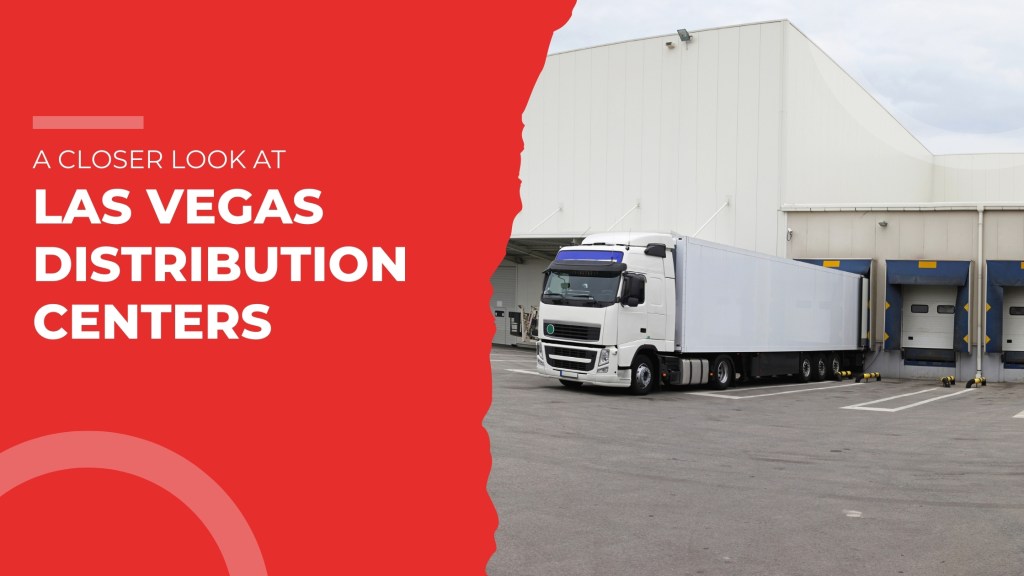
Over the past few decades, Las Vegas has transformed into one of America’s top emerging business hubs. The city has seen rapid growth across sectors like technology, healthcare, hospitality, entertainment, and more. This business expansion has led to increasing demand for warehousing and distribution services that allow enterprises to store inventory and deliver products efficiently. In this comprehensive blog post, we will analyze the crucial role the warehousing and distribution industry plays in supporting the continued growth of companies in Las Vegas.
Meeting Evolving Business Needs with Strategic Warehousing
Warehousing and distribution are critical components of business supply chains. Warehouses store inventory and stock-keeping units until they are ready for shipment to retail stores, distribution centers, or directly to end consumers. Highly optimized distribution networks allow for timely and efficient delivery of products across the Las Vegas metro region, to neighboring cities, remote rural areas, and even cross-country.
For sustained business growth, companies require strategically located storage facilities in proximity to their manufacturing, assembly, or fulfillment centers, along with reliable distribution channels to make their finished goods readily available in target markets. The warehousing and distribution ecosystem acts as the vital backbone, enabling inventory management, production planning, and sales growth for enterprises in Las Vegas.
Attracting Major Brands with Logistics Infrastructure
Las Vegas’ extremely business-friendly environment, central location in the West, proximity to raw material suppliers, and excellent transportation connectivity by road, rail, and air have attracted major brands from industries like e-commerce, CPG, electronics, grocery, apparel, and more to establish large warehouses and distribution centers in the city and surrounding regions.
Leading national corporations like Amazon, Fanatics, and GAP Inc., as well as small and medium-sized businesses, have built extensive storage and distribution facilities to gain a competitive advantage by efficiently catering to customer demands in the Las Vegas market and cutting down costs and delivery times for customers in nearby states. The robust underlying warehousing and distribution capacity enables these firms to seamlessly scale up their operations, expand into new product lines, and reach broader markets by serving more significant customer segments.
Leveraging Innovation and Technology
The warehousing and distribution sector in Las Vegas boasts some of the most sophisticated infrastructure and constantly evolving technologies, which provide businesses with much-desired flexibility, scalability, and optimization. Based on specific inventory storage requirements, companies can choose from a range of warehousing options, such as general ambient storage, temperature-controlled warehouses, fully automated robotic warehouses, hazardous material storage, and more. The availability of multimodal transportation infrastructure seamlessly integrates these storage facilities with the vast distribution network across the region.
Enterprises are also increasingly adopting innovative warehouse automation solutions, barcode scanners, RFID tags, inventory management software, Warehouse Management Systems (WMS), Transportation Management Systems (TMS), order management systems, and more to obtain end-to-end visibility into products and efficiently orchestrate all the intricate movements of inventory and orders within warehouses and across far-reaching distribution supply chains.
Creating Employment and Upskilling Opportunities
The fast-growing warehousing and distribution industry provides excellent employment opportunities for the local workforce across roles ranging from warehouse managers, inventory controllers, material handlers, forklift operators, package sorters, pickers, and packers to dispatch coordinators, truck drivers, and delivery personnel. As companies scale up warehousing and distribution operations to align with business growth, it creates avenues for substantial job creation and skill development for workers.
Investments made by firms to adopt advanced automation and robotics technology also enable existing warehouse workers to be upskilled to handle specialized tasks, enhance productivity, improve accuracy, minimize safety risks and hazards, and deliver higher-quality services. This trained workforce is the most vital asset that sustains business expansion by ensuring efficient and reliable product storage, order processing, and movement of goods through the supply chain. The sector also uplifts local communities holistically through job creation and corporate social responsibility initiatives.
Investing in Next-Generation Networks
To meet the demands of the thriving business landscape and growing population, Las Vegas needs to develop and upgrade its warehousing and distribution capabilities continuously. The local government plays a key role by accelerating infrastructure upgrades, providing tax incentives, subsidies, and favorable zoning policies that enable the swift development of logistics parks and networks across the city.
Leading warehousing companies are expanding storage capacity, optimizing warehouse layouts, and implementing automated systems and robotics technology to handle increased order volumes and throughput. Substantial investments are being made to upgrade distribution capabilities through real-time visibility and tracking systems, route optimization algorithms, digital freight marketplaces, and tools to integrate delivery fleets.
Companies are also proactively adopting eco-friendly solutions like LEED-certified green warehouses with solar panel installations, all-electric material handling equipment, EV truck fleets, and biodiesel transportation to build sustainable warehousing and distribution networks. Such strategic initiatives to boost infrastructure capacity and optimize new and existing warehouses and logistics networks will be instrumental for Las Vegas to continue its impressive business growth trajectory.
Warehousing and Distribution: Critical to Future Growth
As Las Vegas solidifies its position among the country’s top business and employment growth regions, warehousing and distribution will undoubtedly continue to play an indispensable role in supporting the expansion plans of enterprises across all sectors and sizes. Besides the national brands, local startups and SMBs across manufacturing, retail, healthcare, construction, and more will heavily depend on the warehousing and logistics ecosystem to store and move raw materials, components, and finished products in a flexible, efficient, and cost-effective manner.
Continued development of advanced, scalable warehousing and distribution infrastructure integrated with the latest technologies will be the key driving force that fuels robust new business formation and growth of incumbents and attracts more companies to expand into the Las Vegas metro region.
Integrating warehouse automation solutions, AI-powered forecasting and inventory optimization algorithms, big data analytics, robotics, drones, and other emerging technologies will help this sector stay future-ready. This can solidify Las Vegas’ position as a significant warehousing, distribution, and logistics hub on the West Coast.
Conclusion
In summary, state-of-the-art warehousing capabilities, extensive distribution infrastructure, and seamless logistics networks provide a vital competitive edge to the diverse range of businesses operating and expanding in Las Vegas. As companies grow, widen their market reach, and enhance customer experience and service levels, they will rely heavily on the warehousing and distribution sector to fulfill their evolving inventory storage and order fulfillment needs.
Strategic investments into next-generation warehousing and distribution in Las Vegas will be imperative to continue sustaining the incredible growth momentum of its enterprises and economy. Access to flexible, scalable, and efficient warehousing and logistics networks will be the key driving force that unlocks additional business opportunities, spearheads innovation, and catapults future growth.
Name: Accurate Warehousing and Distribution
Address: 6585 Escondido Street Ste B. Las Vegas
Phone No: (702) 777-0300








